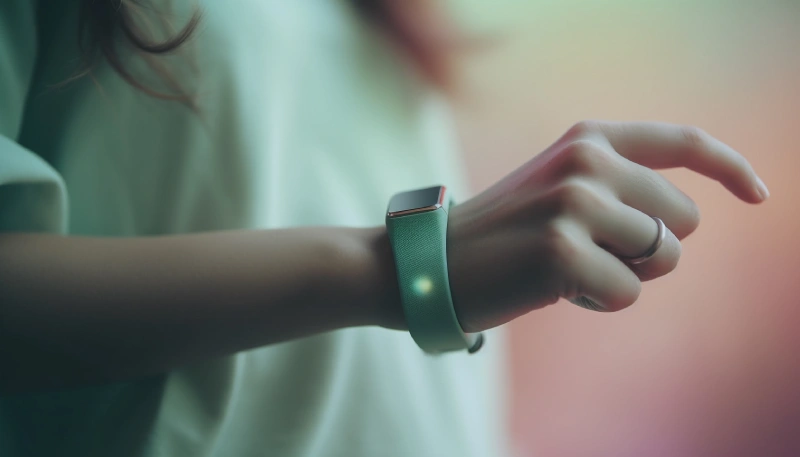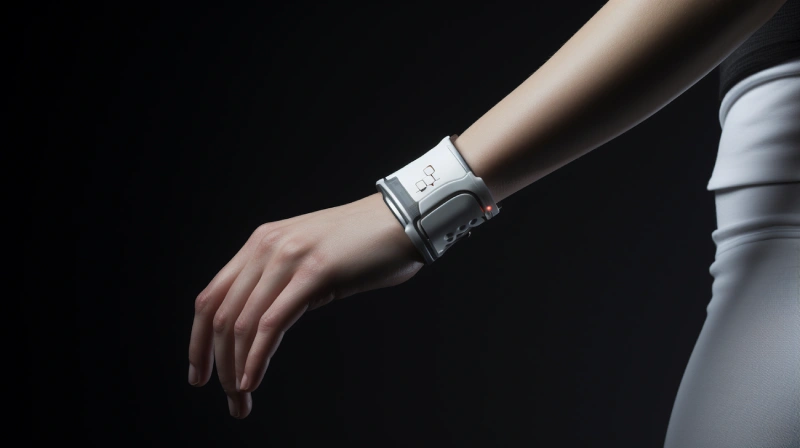The digital revolution in healthcare has reached our bodies, with wearable technology having made significant progress in sensing biochemical and physiological markers for telehealth and remote patient monitoring
They’ve revolutionised personalised healthcare by facilitating a shift from traditional, hospital-centred environments to more decentralised, patient-centric models. Wearable sensors are now collecting real-time physiological data, providing deep analysis, and generating actionable insights for personalised therapy and point-of-care precise diagnostics.
In fact, wearable tech devices, such as smartwatches and fitness trackers, have become pervasive, ensuring continuous monitoring of vital physiological parameters, including sleep patterns, activity levels, heart rate, and even advanced metrics like blood pressure and ECGs (electrocardiograms) – but that was yesterday. Today, wearable tech is being employed in even more sensitive cases such as neonatal care, early detection and management of chronic conditions, and enhanced patient engagement. Let’s delve into this evolution of wearable tech – and its future.

How Does Wearable Tech Work?
Wearable devices like smartwatches and wristbands have miniature sensors that continuously track key physiological signals. These sensors have temperature sensors to monitor changes in skin temperature, PPG (photoplethysmography) sensors that use light to track blood oxygen saturation and heart rate, and accelerometers to measure movement.
Their continual collection and transmission of data allow wearables to detect oxygen saturation and HRV (heart rate variability) levels, which are critical for respiratory assessment. Furthermore, wearables also analyse physiological and movement signals to track sleep patterns, conducting detailed analysis and drawing meaningful insights of sleep cycles, daily activity, and real-time health making everyday health management accessible, informative, and proactive.

The Future of Wearable Tech: Beyond the Ordinary
Early wearables gained traction as personal fitness devices in the form of wristbands, watches and, lately, rings. Potential applications in healthcare broadened with the development of alternative and more discreet form factors (like patches), multiple mounting locations (like the arm and chest), and other biochemical and biophysical sensing capabilities (like blood glucose levels, ECGs, etc.
The current and future innovations in this device class are wildly expansive, including population-level remote monitoring-enabled disease detection, transient technologies, miniaturisation, therapeutic haptic or drug delivery systems, and the incorporation of AI (artificial intelligence).
Intelligent Fabrics
One of the most disruptive technologies was born at the confluence of fashion and technology: intelligent textiles, e-fabrics, or smart fabrics. The tech is exactly like it sounds; it integrates electronic components into fabrics, allowing them to interact with the human body or the environment. Unlike traditional wearables, these are embedded directly into the fabric using digital actuators, sensors, and components, creating versatile, comfortable, and seamless clothing.

Whether it’s adjusting posture or temperature, or monitoring hydration levels and heart rate, smart fabrics gather data and respond to stimuli. Thus, e-fabrics are proving to be indispensable in stress management, athletic performance, and medical monitoring, and are poised to be responsive and dynamic tools for personal wellness and healthcare.
There are a number of fashion-tech collabs, startups, and research laboratories leading the way in this innovation, making it the real deal. Hexoskin creates biometric shirts used by elite athletes and astronauts to track sleep, respiration, and heart rate. Textile computing pioneer Myant weaves connected garments for every industry, including in-car safety systems.
Even Google partnered with Levi Strauss to create the smart Jacquard trucker jacket, whose woven-in sensors allow wearers to answer calls, get directions, and control music with a swipe. There’s also Sensoria with its smart t-shirts, bras, and socks for runners, providing performance metrics such as gait analysis.
E-Skin

One of the most disruptive technologies in the field of wearable tech has been the invention and wide usage of electronic skin, or e-skin. It’s a highly stretchable, thin, and flexible material that impersonates the functions of human skin, such as its ability to sense moisture, pressure, and temperature, self-healing capabilities, and flexibility. So, it’s not surprising that it’s been transforming and greatly improving the efficiency of healthcare systems, especially after being incorporated into wearable devices ranging from fitness bands and trackers to even advanced prosthetics, thus changing lives.
It’s now becoming a crucial component of medical and personal wellness applications as it provides users with continuous feedback and monitoring on their health status. In fact, the demand for wearable devices has driven the demand for e-skin, with companies like MC10 Inc. and Xenoma Inc. having introduced flexible electronics, wearable health sensors, e-skin patches, and clothing for continuous health monitoring.
Neonatal Care
One of the biggest healthcare arenas where wearable tech has truly made a difference is neonatal and paediatric care. Usually, standard clinical care in paediatric and neonatal intensive-care units (PICUs and NICUs) involves continuously monitoring vital signs with hard-wired devices on the skin, and are also invasive in certain instances. They end up causing iatrogenic skin injuries, thus impeding skin-to-skin contact between parents and kids, and greatly complicating clinical care.
Researchers have designed and created skin-interfaced biosensors, a non-invasive, wireless technology which is the measurement equivalence for existing clinical standards for blood oxygenation, temperature, respiration rate, and heart rate. Moreover, it also provides a whole range of new modalities, including tracking neonatal body orientation and movements, capturing acoustic signatures of cardiac activity, and even quantifying skin-to-skin care’s physiological benefits.
What Lies Ahead
It might seem saturated, but we’re just scratching the surface in wearable tech now, even with all its radical innovations. Wearable tech also has the power to improve health equity and address health disparities, and advances in technology might just help with that. With the revenue for wearable technology in healthcare expected to be a whopping USD 69.2 billion by 2028, there’s no doubt that we’re approaching yet another new frontier for personalised healthcare.
In case you missed:
- The Ethics of AI in Healthcare
- Safe Delivery App and the NeMa Smart Bot: How AI Is Aiding Safer Births Amidst Limited Resources
- AI: Bringing About The Next Agricultural Revolution In India
- Constant Vigilance: Why Cyber Hygiene And Digital Self-Care Are Important
- Seabed Security: A Deep Dive Into Underwater Robotics Technology
- Are Driverless Vehicles Here To Stay?
- AI And The Supply Chain: Reshaping The Logistical Network
- The AI Surveillance Society: Is It Necessary or Have We Gone Too Far?
- Can Your Wi-Fi Betray You?
- Keeping Your Tech Tidy: Tips For Data Backup And Safety










